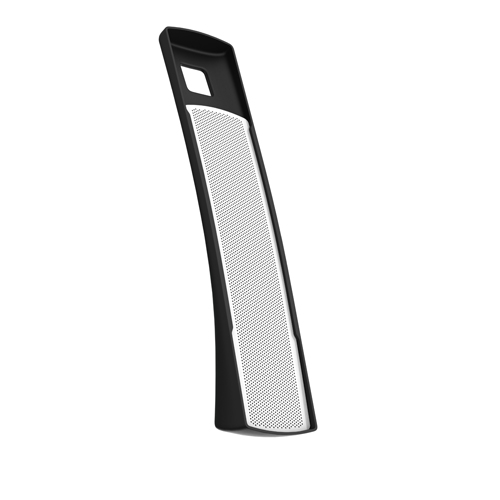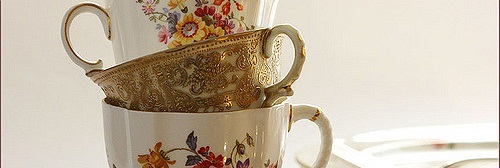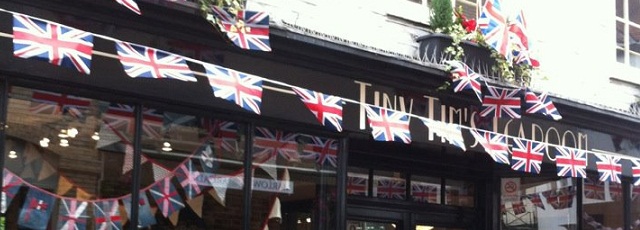They say in Britain everything stops for tea.
What exactly is the English tea at five o’clock?
It’s predominantly a ladies activity – this is how they raise in society: they receive friends over for tea and shine with silver, porcelain, flower arraignments, lofty preparations, sherry, and worldly surprises, or lackeys with liveries. The English love strong black tea served with milk. The tea is prepared and poured by the lord or lady of the house, and never by the servants. It was too expensive to be left to the servants. The guests never pour tea for themselves – the hostess does that. Even the Queen pours to her guests in Buckingham. You do not smoke during tea because it harms the fragrance.
Catarina De Braganca or Catherine Braganza
In England, the tea was introduced to the King’s court in 1662, by Catarina De Braganca, who is considered to be the founder of the British Tea Tradition. She was an infant Princess of Portuguese origin, which is why she was an established tea drinker, by the time her royal family decided to settle her with King Charles II. Her drinking inclinations impacted on the aristocracy and tea

The Drosselmeyer Tea Infuser. Visit our Shop
eventually replaced wine, spirits, and ale as the drink of the English court. Since then the healthy and fragrant beverage has been preferred even to coffee in England.
When tea first arrived in Great Britain in the middle of the 17th century, it was so expensive that only the royal family, aristocracy and other wealthy citizens could afford it. It was served only to selected guests. Since only rich people consumed it at that time – the tea is related to a refined atmosphere, proper conduct, and etiquette, which remain part of the British tea ritual even today.
Coffee Houses
In London, the first coffee house is founded in 1706 by the tradesman Thomas Twining. Enchanted by the business opportunity, he opened the café on the London street of Strand. The etiquette of the epoch stopped the ladies to enter the man’s world of cafes, which is why they were patiently waiting in their carriages, while their escorts bought the so desired tea. The world-famous shop of Twinings exists to this very day on 216 Strand Street.
The tea has always been a priority beverage in the English Coffee Houses. For one penny – the guest received a pot of tea and today’s newspaper. The different houses specialized in different areas of interest – some served the military, others the writers or actors, others – the rulers. For the English gentleman, they are the predecessors of the private club.
The Duchess of Bedford
Once upon a time in the 18th century, the Englishmen had two basic courses for the day – breakfast – extremely lavish, and quite a serious dinner. So when the Duchess of Bedford – Anna Maria Russel decided to organize “light afternoon snacks at 5 o’clock” in her castle – the idea was accepted with fascination by her society. The menu during those gatherings consisted of small muffins, sandwiches, sweets and tea – served in exquisite China sets. Gradually other noblemen adopted the idea of “afternoon tea and a walk in the garden.” In the beginning, the afternoon tea was famous as “Low Tea” – drank on short tables, and “High Tea” was drunk on normal tables by the poor families, who did not have the special tables at their disposal. Nowadays – it’s always “High Tea,” since most British do not observe the tradition in their rapid daily round – and they mostly have takeaway tea.
Gradually other noblemen adopted the idea of “afternoon tea and a walk in the garden.” In the beginning, the afternoon tea was famous as “Low Tea” – drank on short tables, and “High Tea” was drunk on normal tables by the poor families, who did not have the special tables at their disposal. Nowadays – it’s always “High Tea,” since most British do not observe the tradition in their rapid daily round – and they mostly have takeaway tea.
The Tea Parks
In Tea Parks ladies and gentlemen with tea in their hands, could enjoy orchestra performances, games, concerts, gambling or fireworks during the night. In such a Tea Park lord Nelson met the love of his life –Emma, later Lady Hamilton. In Tea Parks, for the first time, women were freely allowed to be present in a mixed company and that was not criticized by society.
Tips
The giving of tips as a reward for quality service appeared exactly in the English Tea Parks. Small, locked, wooden boxes were found on the tables in the garden. On each of them, there were engraved the letters: “T.I.P.S.” – which meant “To Insure Prompt Service.” The tips stimulated the waiters to be friendly, efficient, knowledgeable, professional, and impeccable in their timing. They treated everyone like royalty, and the customer felt rather special.
Afternoon Tea At Ritz
A ritual for Kings and ordinary citizens, tea is drunk in every little province of the British Isles. Nowhere is it served with greater reverence and flair than at Ritz, which sets the standard for the most sacred tradition of Britain. Ritz’s fascinating atmosphere inspired by Versailles promises so much glamor. Ritz is synonymous for “afternoon tea.”
Elegant sandwich slices, warm muffins, homemade strawberry jam and dense cream – as well as a lot of cakes for tea and interesting confections, which allow the chefs to express their talents.
Tea and Language:
It is no secret that the British are a nation of tea lovers. This special affair between Britain and tea is reflected even in their language – they have some expressive idioms, such as:
– “Not for all the tea in China” – which means that nothing, not even tea, can persuade you otherwise.
– “Not my cup of tea” – it’s a common saying, meaning it is not something you like and feel ready for.
– “Storm in a teacup“ – means a lot of drama for a garden-variety problem, something like much ado about nothing.
Fast facts
- The UK imports 140 thousand tonnes of tea every year.
- The UK consumes 165 million cups of tea a day.
- 59% of British people prefer to make their own cup of tea.
- 98% of the Britons take their tea with milk
In the cold spell there is nothing better than a cup of hot and balmy tea. It’s the most consumed of beverages after water.
Nowadays the Afternoon tea is a cultural event. Even to this day the English Queen drinks tea at 5 in the afternoon.
Image Copyright: Nessguide, License: CC BY-SA 2.0



